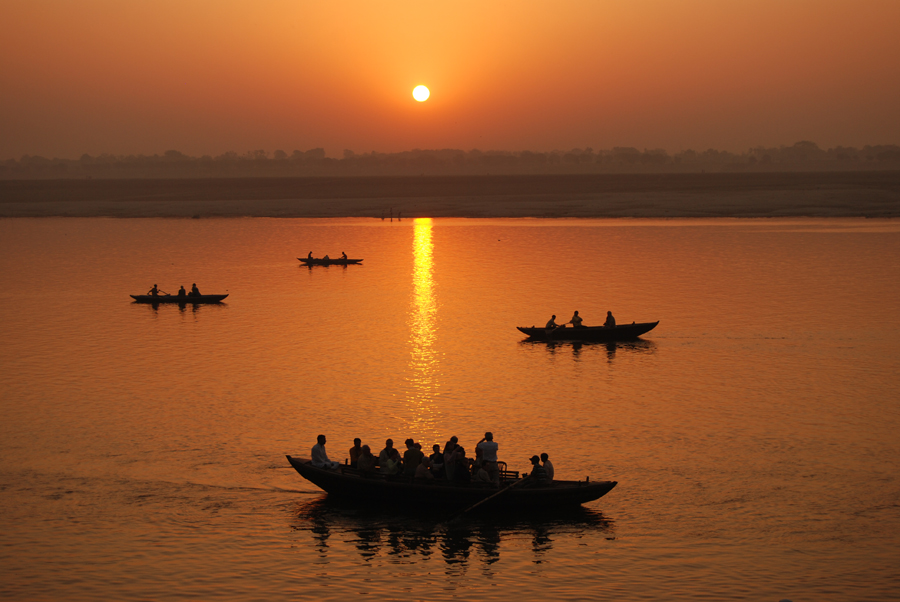Beyond
Lakshmanbala Ghat, with its commanding views of the river. Lies one of the most
dramatic and controversial ghats, Panchganga Ghat, dominated by Varanasi’s
largest riverside building, the great mosque of Alamgir, known locally as Beni
Madhav-ka-Darera. With its minarets now much shortened, the mosque stands on
the ruins of what must have been one of the city’s greatest temples, Bindu
Madhava, a huge Vishnu temple that extended from Panchganga to Rama Ghat before
it was destroyed by Aurangzeb and replaced by an impressive mosque. Panchganga
also bears testimony to more favourable Hindu-Muslim relations, being the site
of the initiation of the medieval saint of the Sufi-Sant tradition, Kabir, the
son of a humble Muslim weaver who is venerated by Hindus and Muslims alike.
Along the river front lies a curious array of three-sided cells, submerged
during the rainy season, some with lingams, others with images of Vishnu, and
some empty and used for meditation or yoga. One of these is a shrine to the
Five (panch) Rivers (ganga) which, according to legend, have their confluence
here: the two symbolic rivulets of Dhutapapa (Cleansed of Sin) and the Kirana
(Sun’s Ray), which join the mythical confluence of the Yamuna and the Yamuna
and the Sarasvati with the Ganga.
Above
Trilochana Ghat, further north, is the holy ancient lingam of the Three (tri)
Eye (lochana) Shiva. Beyond it, the river bypasses some of Varanasi’s oldest
precincts, now predominantly Muslim in character; the ghats themselves
gradually become less impressive and are usually of the kaccha (clay-banked)
variety.
At
Adi Keshava Ghat (the "Original Vishnu"), on the outskirts of the
city, the Varana flows into the Ganga. Unapproachable during the rainy season,
when it is completely submerged, it marks the place where Vishnu first landed
as an emissary of Shiva, and stands on the original site of the city before it
spread southwards; around Adi Keshva are a number of Ganesha shrine.







No comments:
Post a Comment